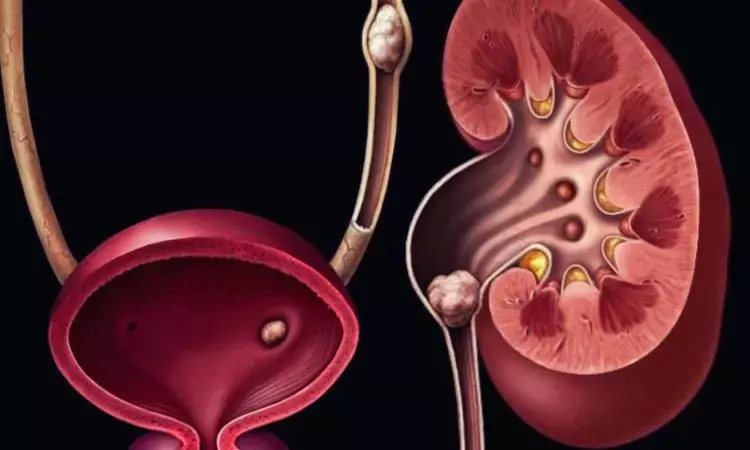- Home
- Medical news & Guidelines
- Anesthesiology
- Cardiology and CTVS
- Critical Care
- Dentistry
- Dermatology
- Diabetes and Endocrinology
- ENT
- Gastroenterology
- Medicine
- Nephrology
- Neurology
- Obstretics-Gynaecology
- Oncology
- Ophthalmology
- Orthopaedics
- Pediatrics-Neonatology
- Psychiatry
- Pulmonology
- Radiology
- Surgery
- Urology
- Laboratory Medicine
- Diet
- Nursing
- Paramedical
- Physiotherapy
- Health news
- Fact Check
- Bone Health Fact Check
- Brain Health Fact Check
- Cancer Related Fact Check
- Child Care Fact Check
- Dental and oral health fact check
- Diabetes and metabolic health fact check
- Diet and Nutrition Fact Check
- Eye and ENT Care Fact Check
- Fitness fact check
- Gut health fact check
- Heart health fact check
- Kidney health fact check
- Medical education fact check
- Men's health fact check
- Respiratory fact check
- Skin and hair care fact check
- Vaccine and Immunization fact check
- Women's health fact check
- AYUSH
- State News
- Andaman and Nicobar Islands
- Andhra Pradesh
- Arunachal Pradesh
- Assam
- Bihar
- Chandigarh
- Chattisgarh
- Dadra and Nagar Haveli
- Daman and Diu
- Delhi
- Goa
- Gujarat
- Haryana
- Himachal Pradesh
- Jammu & Kashmir
- Jharkhand
- Karnataka
- Kerala
- Ladakh
- Lakshadweep
- Madhya Pradesh
- Maharashtra
- Manipur
- Meghalaya
- Mizoram
- Nagaland
- Odisha
- Puducherry
- Punjab
- Rajasthan
- Sikkim
- Tamil Nadu
- Telangana
- Tripura
- Uttar Pradesh
- Uttrakhand
- West Bengal
- Medical Education
- Industry
Hematuria Not a Reliable Indicator in Pediatric Kidney Stones, Suggests Study

Iran: A new study has revealed that over half of children with nephrolithiasis did not show hematuria, emphasizing that urinalysis alone is not sufficient for diagnosis and reinforcing the importance of imaging in evaluating suspected pediatric kidney stones.
The study, published in Pediatric Nephrology by Zahra Pournasiri and colleagues from the Pediatric Nephrology Research Center at Shahid Beheshti University of Medical Sciences, highlights the limited diagnostic value of hematuria in young patients with kidney stones.
Pediatric nephrolithiasis has been steadily increasing worldwide, and hematuria—blood in the urine—has traditionally been considered one of the most common and reliable markers for detecting stones. However, the precise relationship between hematuria and stone characteristics in children remains largely uncertain. This study set out to evaluate this association and determine whether hematuria could be used as a reliable indicator of stone disease in the pediatric population.
The researchers conducted an observational analysis of children aged one month to 18 years who were diagnosed with nephrolithiasis or nephrocalcinosis. To ensure accurate interpretation, the study excluded children with systemic illnesses, active urinary tract infections, congenital urinary tract abnormalities, familial hematuria, recent trauma, fever, urinary tract tumors, or recent renal colic episodes. Detailed information, including demographics, stone features, metabolic findings, and urinalysis reports, was collected and analyzed using standard statistical methods.
The key findings of the study were as follows:
- The study evaluated 260 children, with an average age slightly above 5 years and a small male predominance.
- Hematuria was present in only 40% of cases, showing that most children with confirmed kidney stones did not exhibit this common diagnostic sign.
- This observation challenges the long-standing belief that urine testing is a reliable indicator for detecting pediatric stone disease.
- The likelihood of hematuria differed based on stone location, with ureteral and bladder stones more frequently associated with blood in the urine.
- Stones in the lower renal calyces showed much lower hematuria rates, potentially leading to delayed diagnoses when urinalysis is solely relied upon.
- No significant association was found between hematuria severity and stone size or number.
- These findings indicate that even children with larger or multiple stones may not exhibit hematuria, highlighting the limitations of relying solely on urinalysis for diagnosing pediatric nephrolithiasis.
The authors concluded that hematuria should not be viewed as a standalone diagnostic marker in children suspected of having kidney stones. Instead, imaging—such as ultrasound—remains an essential component of the diagnostic pathway, particularly for children who present with symptoms but lack hematuria on urinalysis.
"The research reinforces the need for heightened clinical vigilance and supports a more comprehensive diagnostic strategy to ensure timely detection and management of kidney stones in pediatric patients," they wrote.
Reference:
Pournasiri, Z., Taheri, M.M., Fatollahierad, S. et al. Hematuria as a diagnostic marker in pediatric nephrolithiasis without acute obstruction or infection. Pediatr Nephrol (2025). https://doi.org/10.1007/s00467-025-07032-5
Dr Kamal Kant Kohli-MBBS, DTCD- a chest specialist with more than 30 years of practice and a flair for writing clinical articles, Dr Kamal Kant Kohli joined Medical Dialogues as a Chief Editor of Medical News. Besides writing articles, as an editor, he proofreads and verifies all the medical content published on Medical Dialogues including those coming from journals, studies,medical conferences,guidelines etc. Email: drkohli@medicaldialogues.in. Contact no. 011-43720751
Next Story


